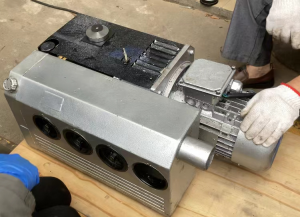A common question in advanced manufacturing is: Does Electron Beam Welding (EBW) require a vacuum pump? The short answer is a resounding yes, in the vast majority of cases. The vacuum pump is not just an accessory but the very heart of a conventional EBW system, enabling its unique capabilities.

The core of EBW involves generating a focused stream of high-velocity electrons to melt and fuse materials. This process is exceptionally sensitive to gas molecules. In a non-vacuum environment, these molecules would collide with the electrons, causing the beam to scatter, lose energy, and defocus. The result would be a wide, imprecise, and inefficient weld, utterly defeating the purpose of EBW's pinpoint accuracy and deep penetration. Furthermore, the electron gun's cathode, which emits the electrons, operates at extremely high temperatures and would oxidize and burn out instantly if exposed to air.
Therefore, High-Vacuum EBW, the most prevalent form, requires an exceptionally clean environment, typically between 10⁻² to 10⁻⁴ Pa. Achieving this necessitates a sophisticated multi-stage pumping system. A roughing pump first removes the bulk of the atmosphere, followed by a high-vacuum pump, like a diffusion or turbomolecular pump, which creates the pristine conditions necessary for optimal operation. This ensures a contamination-free, high-integrity weld, making it indispensable for aerospace, medical, and semiconductor applications.
A variation known as Medium or Soft-Vacuum EBW operates at a higher pressure (around 1-10 Pa). While it significantly reduces pump-down time for better productivity, it still absolutely requires vacuum pumps to maintain this controlled, low-pressure environment to prevent excessive scattering and oxidation.
The notable exception is Non-Vacuum EBW, where the weld is performed in the open atmosphere. However, this is misleading. While the workpiece chamber is eliminated, the electron gun itself is still maintained under a high vacuum. The beam is then projected through a series of differential pressure apertatures into the air. This method suffers from significant beam scattering and requires stringent X-ray shielding, limiting its use to specific high-volume applications.

In conclusion, the synergy between the electron beam and the vacuum pump is what defines this powerful technology. For achieving the supreme quality and precision that EBW is renowned for, the vacuum pump is not an option—it is a fundamental necessity.
Post time: Nov-10-2025






